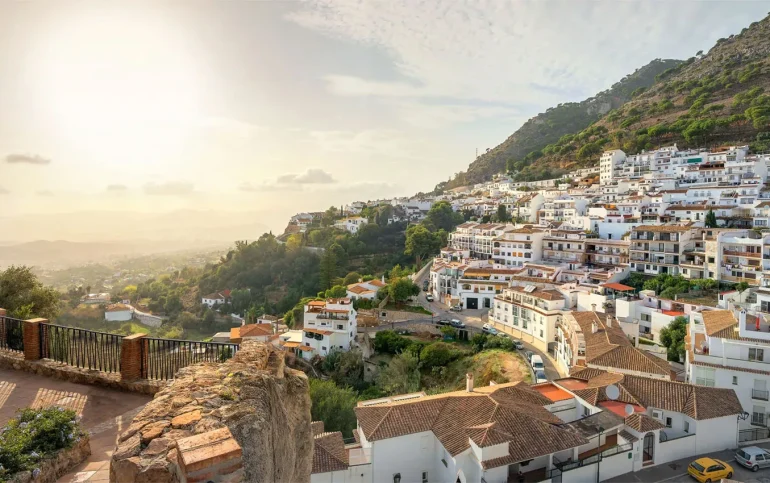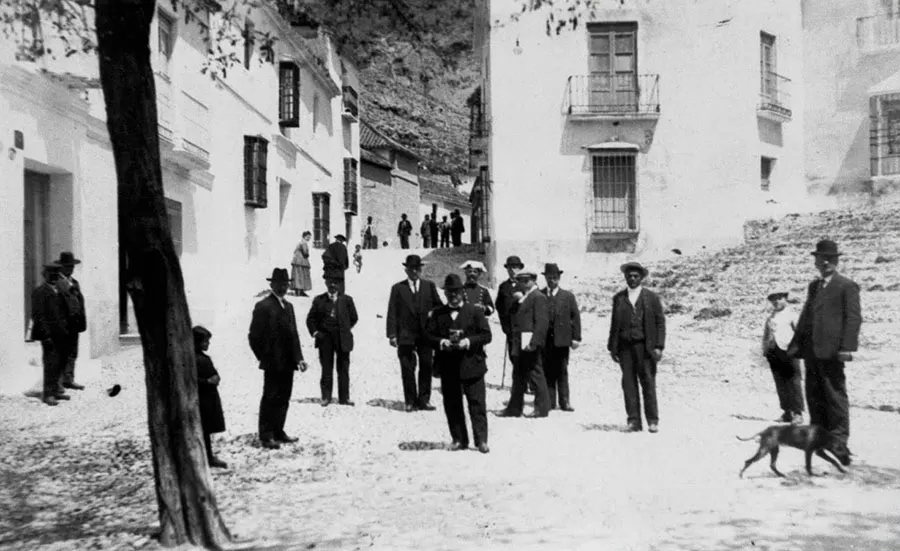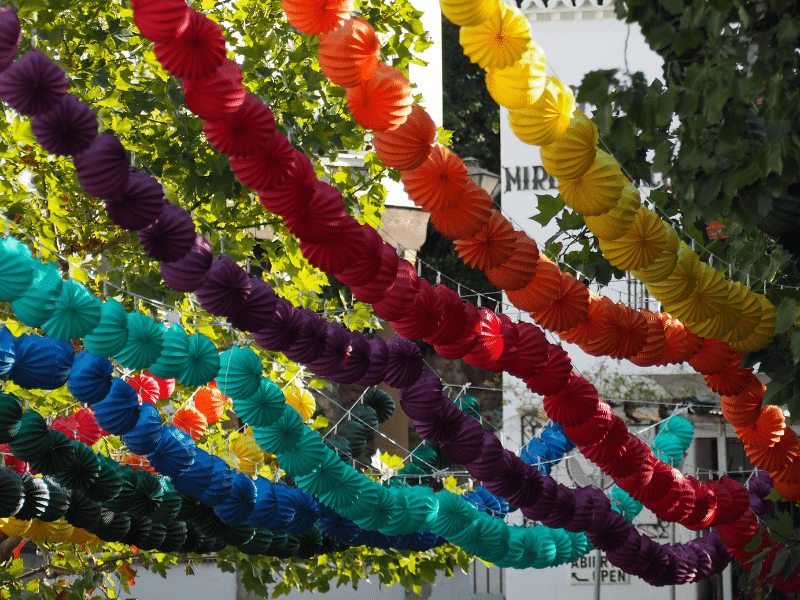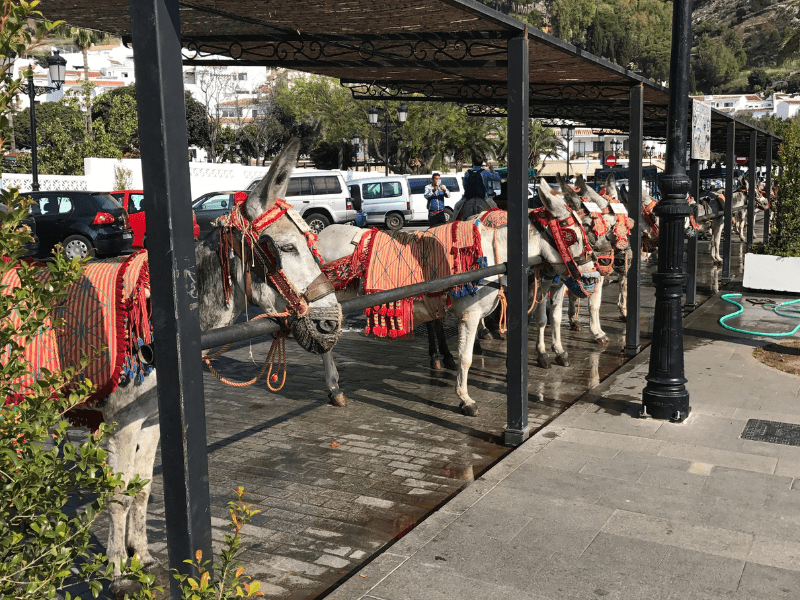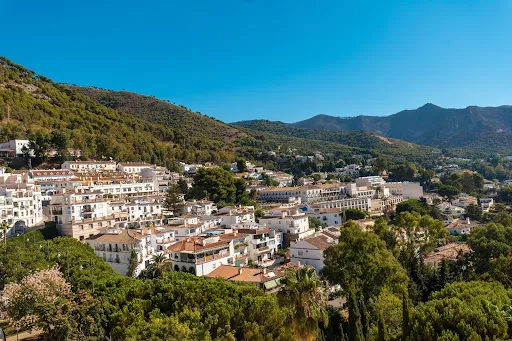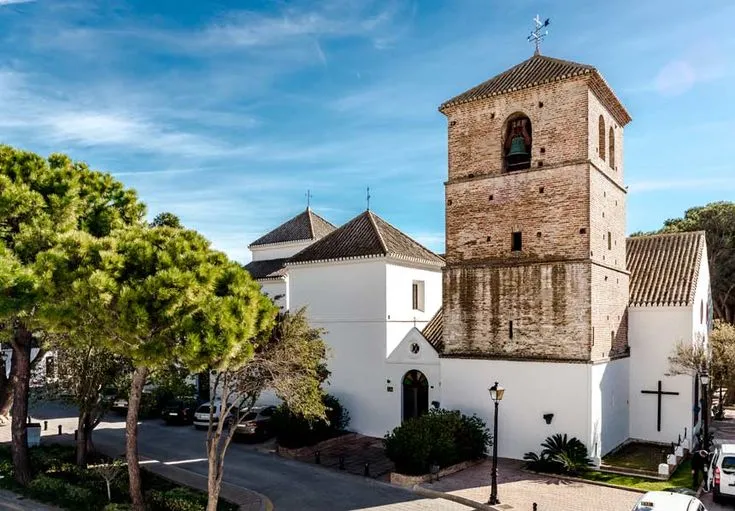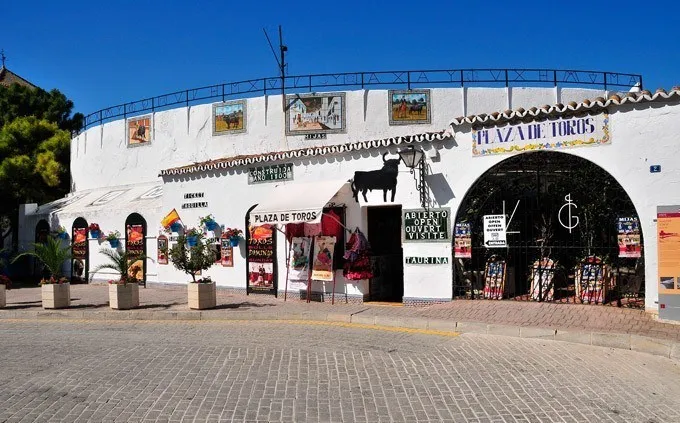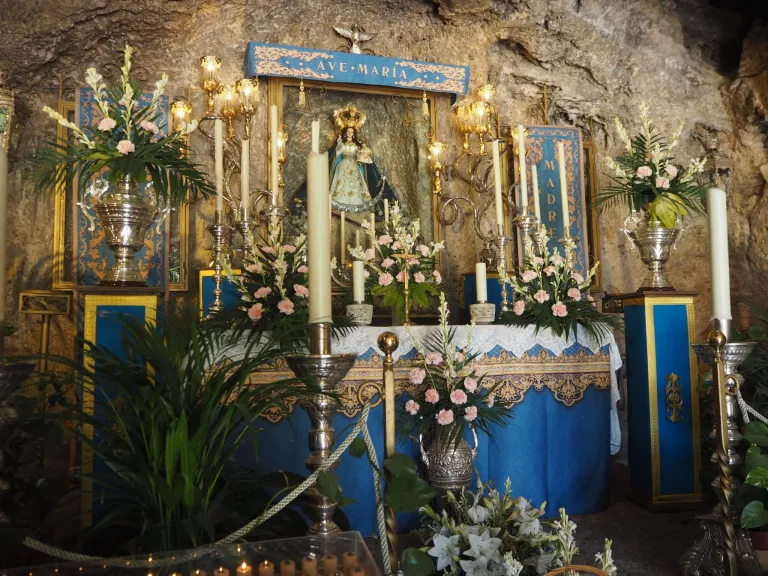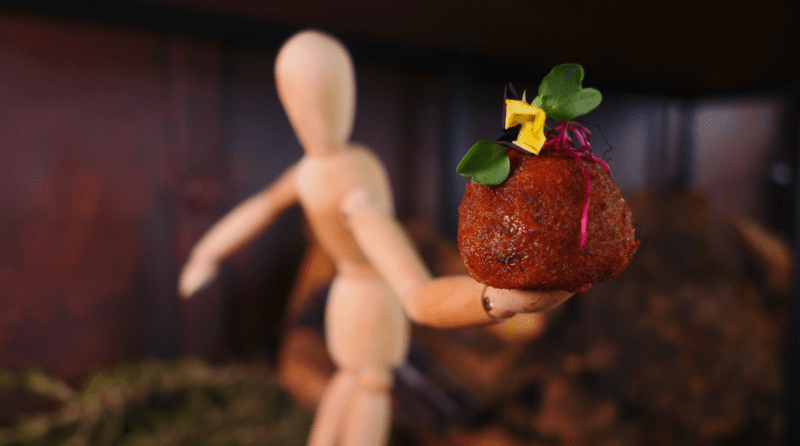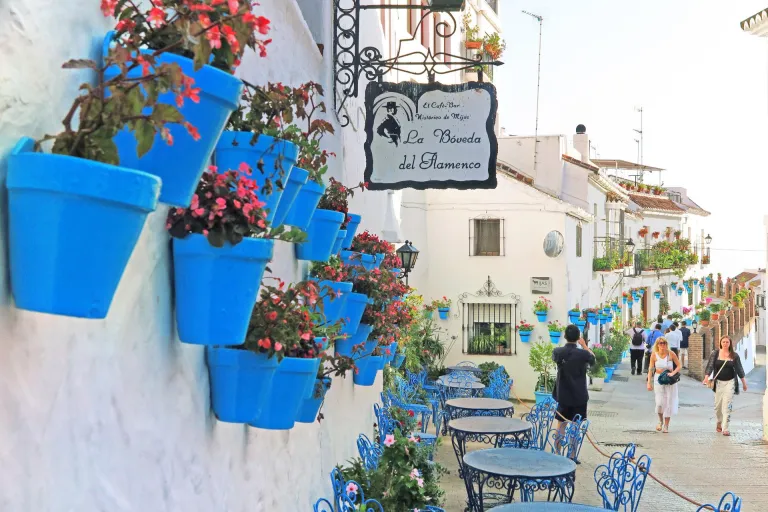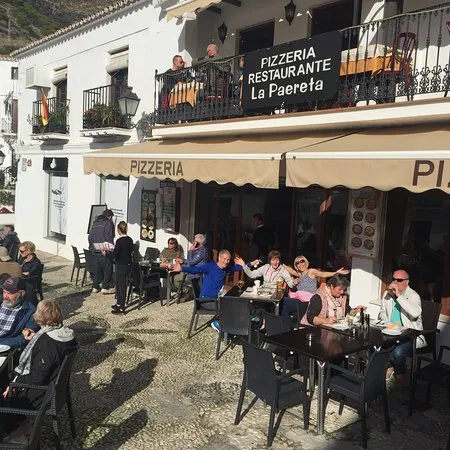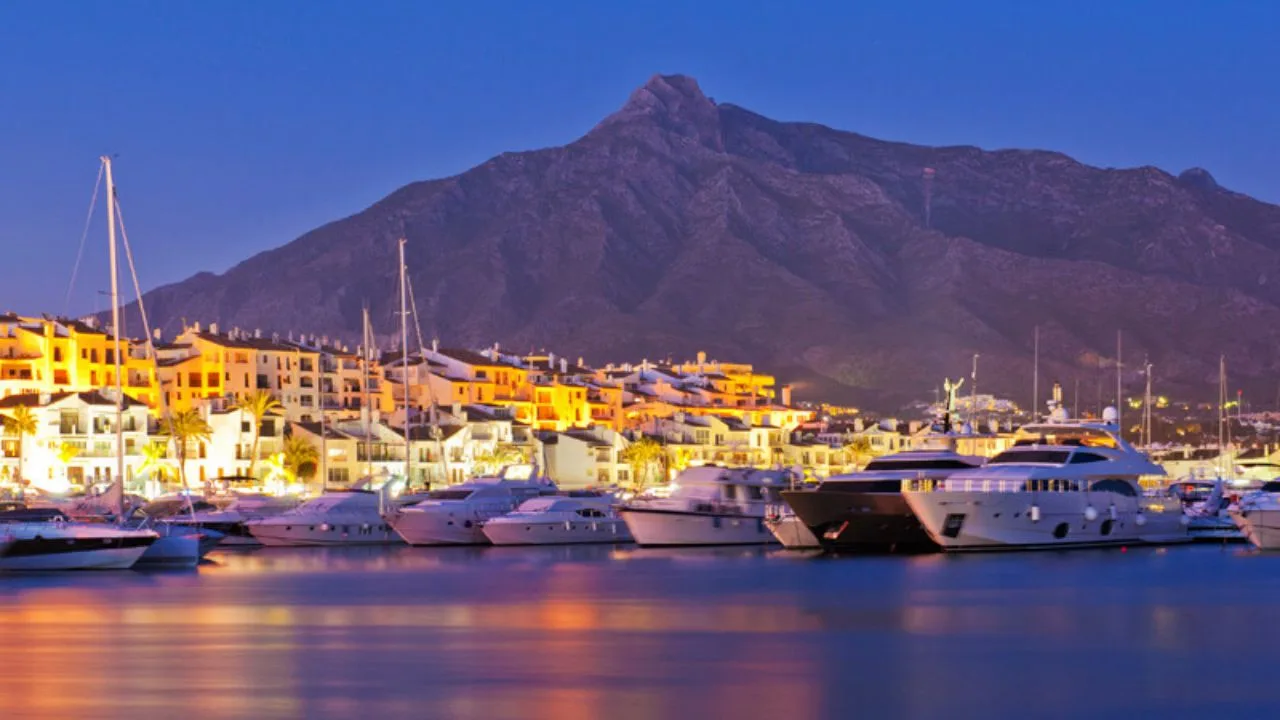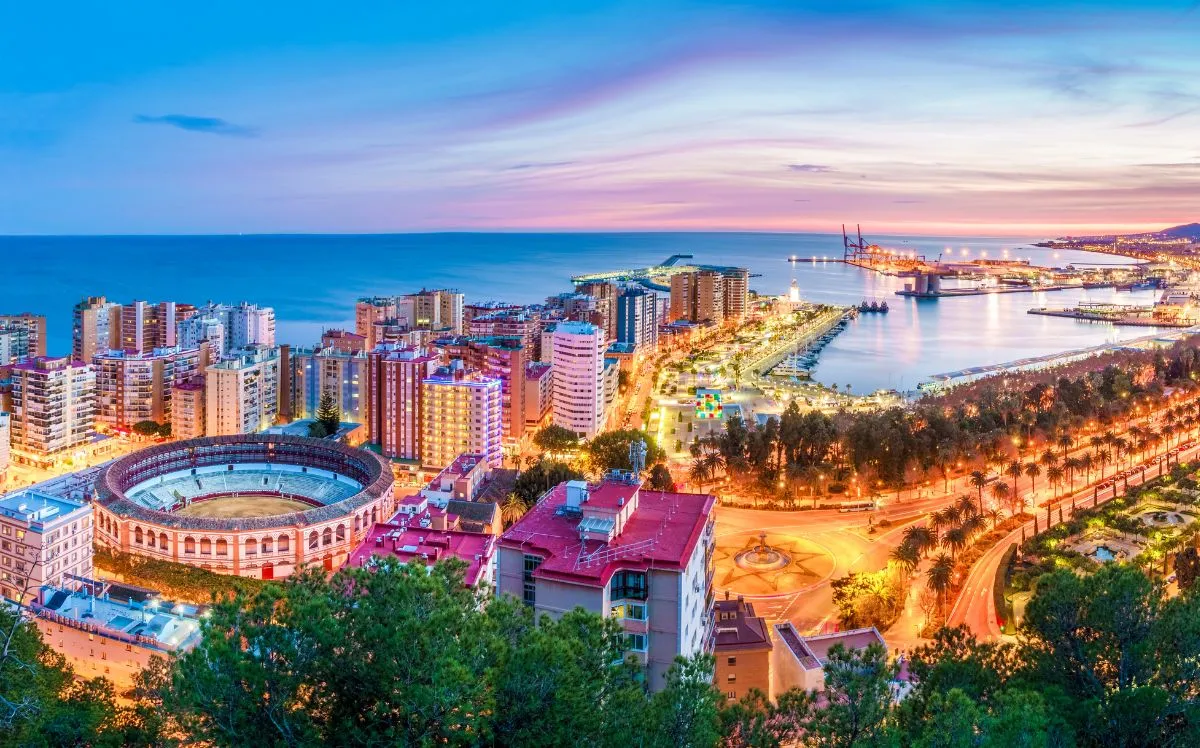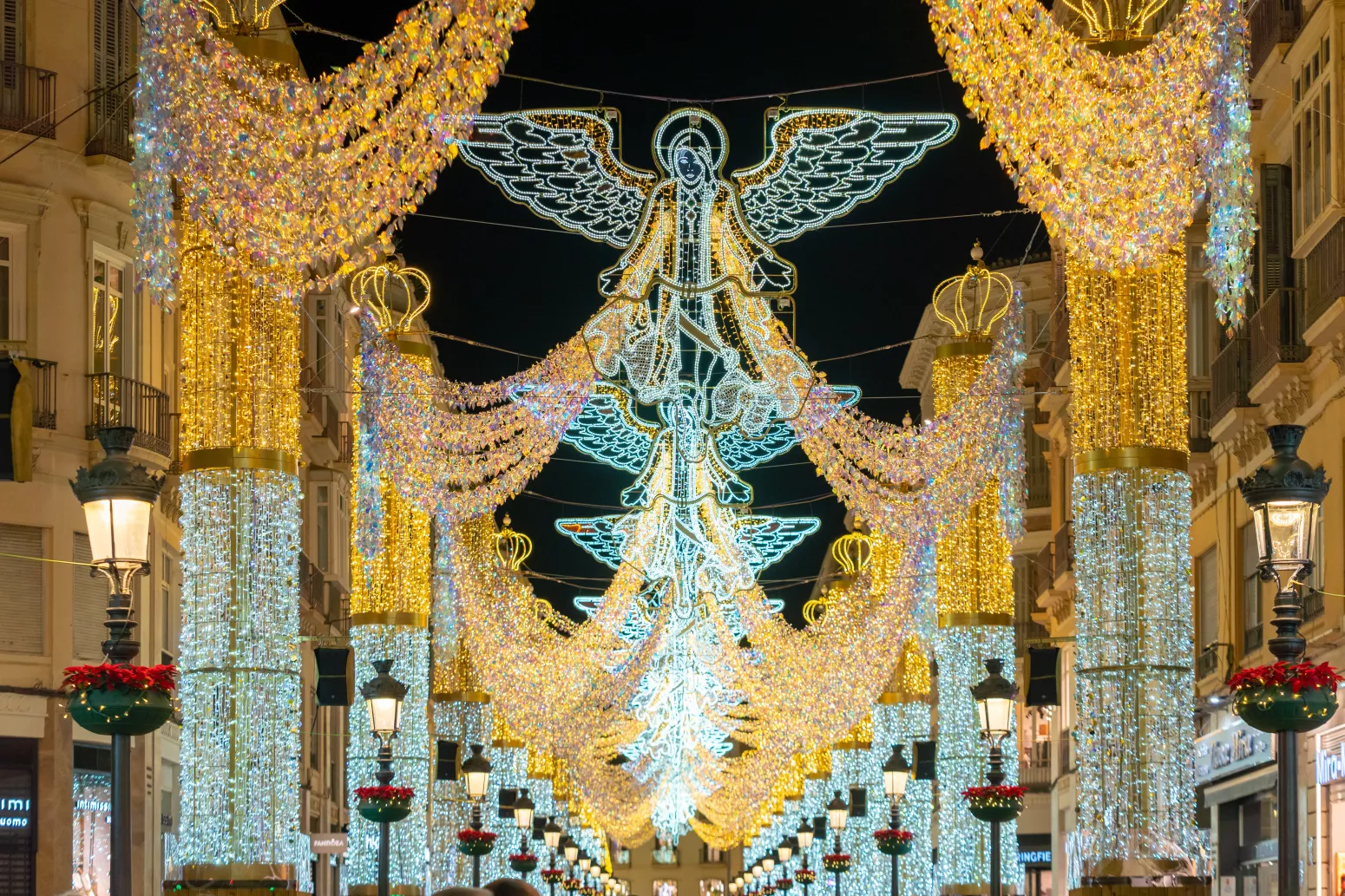Guide to Mijas Pueblo
On the Costa del Sol, you can experience many different cities and areas. Still, none are quite like “The White Village” Mijas Pueblo.
The small town situated in the mountains, 400 meters above sea level, has become a rather popular tourist attraction, mainly thanks to its incredible coastal views.
Over the years, it has become a top-rated area for property buyers looking for a secluded location to have their family- or holiday home. If you are interested in knowing what it’s like to live in or around Mijas Pueblo, then read this guide to learn more about the town and its hidden gems.
The History of Mijas Pueblo
Mijas Pueblo, locally known as “The White Village”, dates back many years. The walls of Mijas are from the Phoenician era, and remains like ceramics have been found. This proves that there was an established population in the area until the second century BC when the Romans began to invade the area. Back then, the city was known as “Tamisa” and was used as a base from where the Romans exploited iron ore and marble from the Sierra de Mijas mountain range.
During the Moorish invasion of Spain in the year 714, Mijas was captured by the Arabs under Abdalaziz, making it part of Al-Andalus. Throughout this era, the town grew both demographically and economically, and its name, “Tamisa”, was changed to “Mixa”, which was then turned into “Mijas” when the Spanish re-conquered the town.
In 1487, just before the collapse of the Arab Kingdom, the Catholic Monarchs’ troops captured the city. They had been trying since 1485, but Mijas managed to resist until 1487. During the years of fighting, Mijas was used as military headquarters because of its strategic location. Once the fight was over, and the Catholics had control of the city, inhabitants of Mijas were sold as slaves.
After the Christians regained control of Southern Spain, 50 families settled in Mijas, and the lands were divided between them.
One of the first buildings to be built in Mijas Pueblo was the Inmaculada Concepcion Church, completed in 1631. It became a refuge for locals on several occasions.
 In 1873 the road between Fuengirola and Mijas Pueblo was built. However, it still took until 1953 before the first telephone line was available in the village. It wasn’t until the 50s that the tourism industry started developing, and several smaller hotels were built. This was the same time when Costa del Sol began experiencing increased tourism along the coast.
In 1873 the road between Fuengirola and Mijas Pueblo was built. However, it still took until 1953 before the first telephone line was available in the village. It wasn’t until the 50s that the tourism industry started developing, and several smaller hotels were built. This was the same time when Costa del Sol began experiencing increased tourism along the coast.
Mijas Pueblo today
Mijas Pueblo is part of the municipality of Mijas, which is one of the largest municipalities in terms of land in the whole province of Málaga. It stretches over 140 square kilometres of land, including some beautiful mountainous areas and 14 kilometres of the Mediterranean coastline.
Since Mijas is one of the largest municipalities in Málaga province, it has been separated into different areas to make it more manageable.
Mijas Pueblo is a mountain village overlooking the Mediterranean Sea and the other areas of Mijas municipality, such as Las Lagunas de Mijas, Mijas, La Cala de Mijas, Riviera del Sol and Calahonda.
Usually, we use Mijas Costa when we speak about the municipality as a whole.
Mijas Pueblo is nestled into the mountain landscape. It is a typical Andalusian white-washed mountain town with a maze of narrow cobbled streets.
The climate and the magnificent location have made the town a top-rated tourist attraction to the extent that many foreigners have taken residence here. More than 10.000 people reside in and around the town, with no less than 78 nationalities represented, according to the official register.
It is not only the climate and the location that attracts people. The old authentic charm and historical remains are also factors that have attracted tourists and residents to the town for years. Mijas Pueblo provides the Spanish way of life with its narrow streets, white houses, and selection of artisan shops and boutiques.
On the main square (Plaza Virgen de la Peña), there are several bars and restaurants where you can enjoy everything from excellent coffee to Spanish tapas and other delicacies. On the same square, there are also often markets and local festivities to explore. Every Wednesday, you can find all types of homemade crafts at the local market. If you are looking for a full day of shopping, we recommend you go to Fuengirola, as you will only find local shops in Mijas.
In September every year for 5 days, you can also enjoy the local Feria “Virgen de la Peña”, a festival celebrating the Virgin Mary, the patron saint of Mijas. During the festival, you will see women and young girls dressed in traditional, astonishing flamenco dresses in all types of patterns and colours, and also experience all kinds of parades, culinary experiences, amusements, and live performances. It’s 5 days filled with festivities and fun.
A factor that makes Mijas Pueblo unique and different from other towns are its “burro-taxis” (donkey taxis) – see the nooks and crannies of the town on the back of a donkey.
At the beginning of the 1960s, workers who were returning home on their donkeys were requested by visitors, first to be photographed and then to go for a ride on donkey back. It didn’t take long before the workers discovered that the tips they received from this exceeded their wages. This is how the burros taxis were born.
Today, the service has its own parking lot. Many tourists enjoy trying this particular form of transport, but many are against it. Opponents claim that donkeys carry too heavy loads throughout the long day and are tied to a pole 24 hours a day without the possibility to rest.
A local organisation called Donkey Dreamland provides homes for donkeys, free from pain and suffering, surrounded by people who offer love and respect in a calm environment.
Walking through the streets of Mijas Pueblo is the best way to experience the beautiful town to its fullest. Despite Mijas Pueblo being a small town, there are still many attractions and lovely restaurants to try. Take, for example, a walk through “Parque la Muralla” where you can enjoy the view of the coast. The beautiful park is located on the grounds of the original fortress that was once here. Coin-operated binoculars are available around the park’s perimeter to enhance the experience.
Living in Mijas Pueblo
Over the years, Mijas Pueblo has become a more popular place for foreigners and locals to settle down. There are many possibilities, whether right in the town centre or surrounding urbanisations.
If you are planning a move to Spain from another country, there are different things you need to be aware of. Read about the buying process here.
Knowing the different rules and procedures for buying a house in Spain, you can start looking into where you want to purchase. You may be already set on Mijas Pueblo or one of the surrounding urbanisations and already know which type of property you are looking for.
You will mainly find the characteristic white townhouses within the town of Mijas Pueblo. Still, you can also find an apartment if that is what you want.
If you want to purchase a big villa with a garden and pool, you will have to look at the urbanisations neighbouring Mijas Pueblo, like Mijas Heights, Valtocado, Las Lomas de Mijas, or Mijas la Nueva.
On a regular day-to-day basis, life is good in Mijas Pueblo. You enjoy the Spanish “tranquillity” and can remain undisturbed by city noise. At the same time, you are only a short drive away from the busy town of Fuengirola with its supermarkets, shopping centre, beaches and much more.
Suppose you decide to live in Mijas Pueblo. In that case, it is a good idea to own a car, as it makes it easier for you to get from A to B (especially when going grocery shopping in Fuengirola), but there is also public transport. Bus M-112 drives between Fuengirola and Mijas Pueblo every 15-30 minutes Monday-Sunday. During the weekend and on bank holidays, the schedule varies, but it’s always in service. If needed, you can find a time schedule here.
You can get by in Spain speaking English. Still, in local towns like Mijas Pueblo, most Spanish residents appreciate it when people integrate into the culture and try to communicate with them in Spanish. It is worth learning basic Spanish if you consider moving to Mijas Pueblo. Due to the many foreigners residing in Mijas Pueblo, the Town Hall has created a helpful Foreigners department, which caters to the needs of those residents who do not speak Spanish.
4 Attractions in Mijas Pueblo
Iglesia de la Inmaculada Concepción:
The Church of the Immaculate Conception was built in the upper part of town on top of the ruins of an old Moorish castle. One of the castle’s towers has been incorporated into the church as the bell tower.
At the beginning of the 16th century, Bishop Bernardo Manrique ordered the church’s construction. In 1631 the finished church was consecrated.
In the early 1990s, during restoration work, eight fresco paintings of the apostles were discovered on the columns by an unknown painter dating back to 1632. These have been restored and can still be seen in the church.
It’s free to visit the church, and it is open daily. You will find it on Paseo de la Muralla, across the street from the bullring.
Mayan Monkey Mijas:
Mayan Monkey Mijas is the world’s smallest chocolate factory. The shop has two locations in Mijas Pueblo. In their Plaza Virgen de la Peña location, you will find its chocolate factory, museum and a café. The other cafe where visitors can enjoy homemade chocolates and ice-creams is located on Plaza de la Constitución.
Mayan Monkey Mijas offers a selection of hugely fun chocolate-making experiences. Not only can you buy homemade chocolate, but you also have the option to participate in workshops where you will become a chocolatier and make your own chocolate.
There are several workshop “classes” depending on availability and how much chocolate you wish to make. With all the workshops, you can take home the chocolate you make.
In the Cacao Museum, you go on quite a journey. Learn about the colourful fruit of the cacao tree, examine exquisitely crafted machines from a bygone age, and track the evolution of the chocolate-making process over thousands of years – amongst other things.
The Mayan Monkey Mijas is an incredible experience for both children and adults.
Mijas Bullring:
This outstanding bullring is located in the very centre of Mijas Pueblo. It falls right into the picture of the white-washed houses in Mijas Pueblo. However, its oval shape makes it quite unique. In Spain, most bullrings are round, and only a handful have an oval shape like the one in Mijas. Remarkably, bullfighting has been a popular cultural tradition in Spain for many centuries. Still, this bullring was not built until the 1900s.
Entering the bullring only costs € 3 per person, which gives you access to the ring itself and to the museum, where you will see a display of matador outfits and billboards from different years of bullfight announcements.
Grotto of the Virgen de la Peña:
At the end of the park beside the burro taxi stand is the grotto of the Virgen de la Peña. “Peña” means cliff in Spanish. The grotto has been carved into the rock beside the castle walls.
Inside is a chapel to the Virgen de la Peña, as well as a small room where the ceremonial clothes of the Virgen are kept.
Legend has it that in 1586 a man lived in the town with his wife and two children. The children used to play in the park next to where the grotto is located today. One day they saw a white dove, more beautiful than any other dove. It alighted on them, and they stroked it before it flew away. They went home and told their parents about the experience the same night. The next day the same thing happened, and when the children told their parents in the evening, they were ordered not to go back in case something strange happened.
Two days later, the children disobeyed their parents and returned to the park, where they heard a voice calling them. Beside the tower of the castle walls appeared the Virgin with a child in her arms and the white dove on her shoulder. One of the children asked who she was, to which she answered, “I am the Mother of God”. She told the children to inform their parents, the authorities and the town priest of what they saw and to ask them to remove her from the rock, where she had been inside for the last 500 years.
The next day the children’s parents, the authorities, and the rest of the town went to the tower where the Virgin had appeared. The father went to the top of the tower and hit the rock when he heard a hollow sound. He continued to dig into the rock and found the Virgin.
Thanks to this legend, the town gained fame. It was decided that a chapel should be built into the rock to commemorate the Virgin.
A hermit priest named Diego decided to build the chapel himself. In 1682 the chapel was finished. The priest was buried in the chapel when he died.
The legend sounds different depending on who you ask, but all include the two children, the dove and the Virgin.
It’s possible to enter the cave free of charge.
4 Restaurants & Bars in Mijas Pueblo
Alboka Gastrobar:
This is undoubtedly one of the best tapas restaurants in the area.
Alboka Gastro was born on 13 August 2016, after much effort, at the hands of young people with great enthusiasm and courage. The owners are the 4th generation of a family dedicated to hospitality. Their great-grandparents founded one of the first restaurants in Mijas.
The restaurant specialises in fusion tapas, so you will experience some exciting and flavourful dishes when you come here to eat.
La Boveda del Flamenco:
At one end of Plaza de la Constitución, you will find the very popular Boveda del Flamenco. It is a gorgeous bar with the Andalucian charm of a white-washed building, with plants on the wall and colourful chairs and tables.
La Boveda del Flamenco, at first glance, appears to be an expensive eatery; however, it is just the opposite. It is a bar, so they do not serve fancy five-course meals. Instead, it is the perfect place to enjoy a nice beer or coffee, a snack, or a sandwich.
Koco Bistro:
At Koco Bistro, you can have a complete gastronomic experience.
Located in the centre of town, very close to Plaza Virgen de la Peña, it is easy to find and close to all other amenities.
Enjoy amazing tapas, fantastic main courses, delicious deserts and flavourful cocktails.
Since this restaurant is very popular and always quite busy, we recommend booking a table.
Pizzeria la Paereta:
If you are into Italian food, we recommend you stop by Pizzeria la Peareta. The restaurant is in the centre of town, and you can sit on the outdoor terrace with a view of Plaza de la Constitución.
The menu offers everything from pizza to pasta and risotto. The restaurant’s dishes are reasonably priced.
 English
English Danish
Danish 